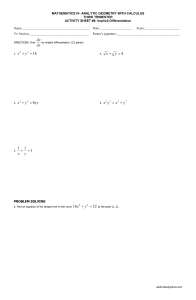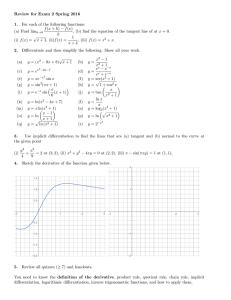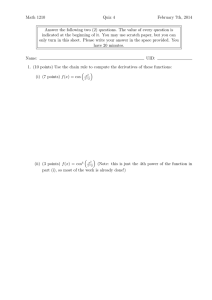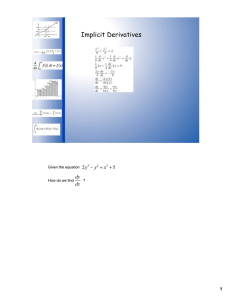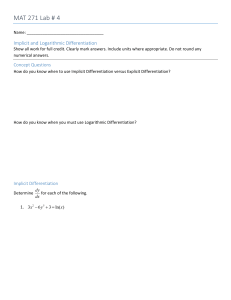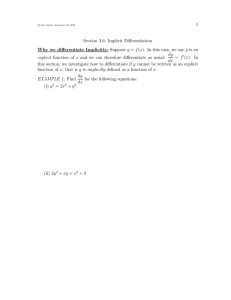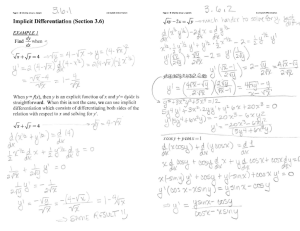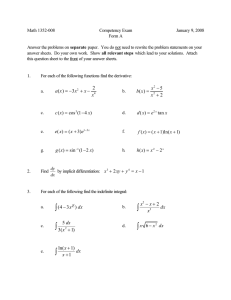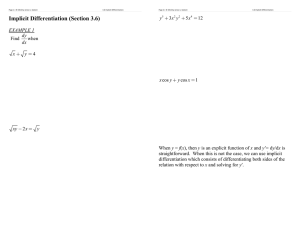Section 3.6: Implicit Differentiation
advertisement
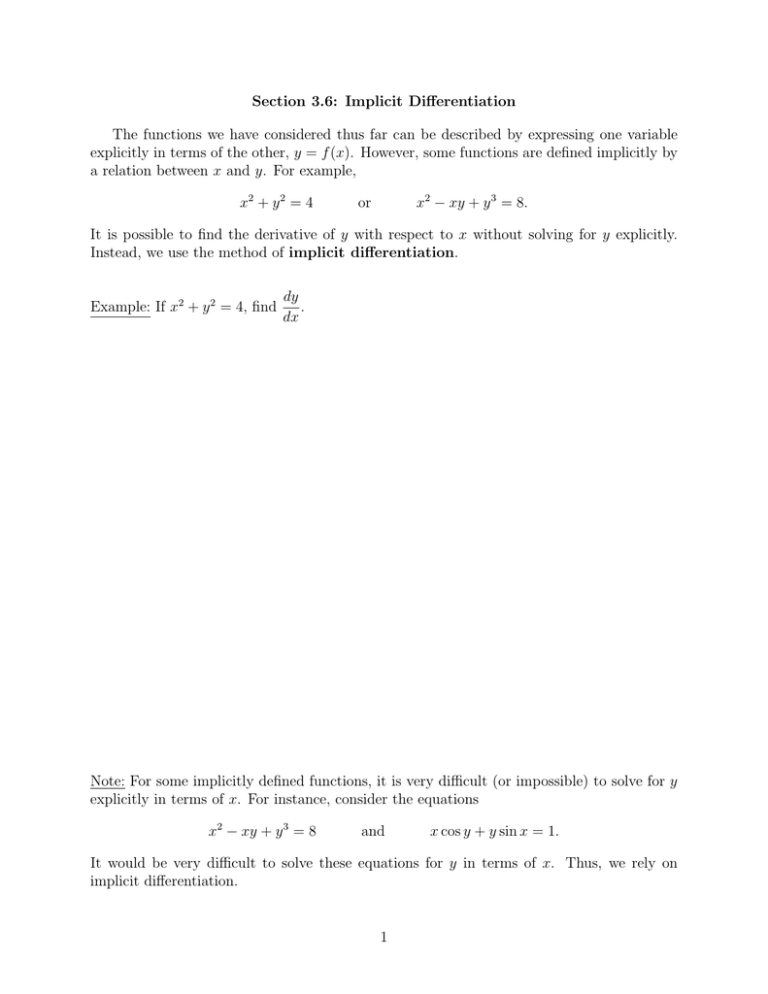
Section 3.6: Implicit Differentiation The functions we have considered thus far can be described by expressing one variable explicitly in terms of the other, y = f (x). However, some functions are defined implicitly by a relation between x and y. For example, x2 + y 2 = 4 x2 − xy + y 3 = 8. or It is possible to find the derivative of y with respect to x without solving for y explicitly. Instead, we use the method of implicit differentiation. Example: If x2 + y 2 = 4, find dy . dx Note: For some implicitly defined functions, it is very difficult (or impossible) to solve for y explicitly in terms of x. For instance, consider the equations x2 − xy + y 3 = 8 and x cos y + y sin x = 1. It would be very difficult to solve these equations for y in terms of x. Thus, we rely on implicit differentiation. 1 Example: Use implicit differentiation to find dy for each equation. dx (a) x2 − xy + y 3 = 8 (b) √ √ x+2 y =4 (c) x cos y + y sin x = 1 + x2 2 (d) x3 (x + y) = y 2 (8xy) x2 y2 Example: Find an equation of the tangent line to the ellipse + = 1 at the point 9 36 √ (−1, 4 2). 3 Example: If [g(x)]2 + 12x = x2 g(x) and g(4) = 12, find g 0 (4). Definition: Two curves are called orthogonal if at each point of intersection their tangent lines are perpendicular. Example: Show that the curves x2 − y 2 = 5 and 4x2 + 9y 2 = 72 are orthogonal. 4
